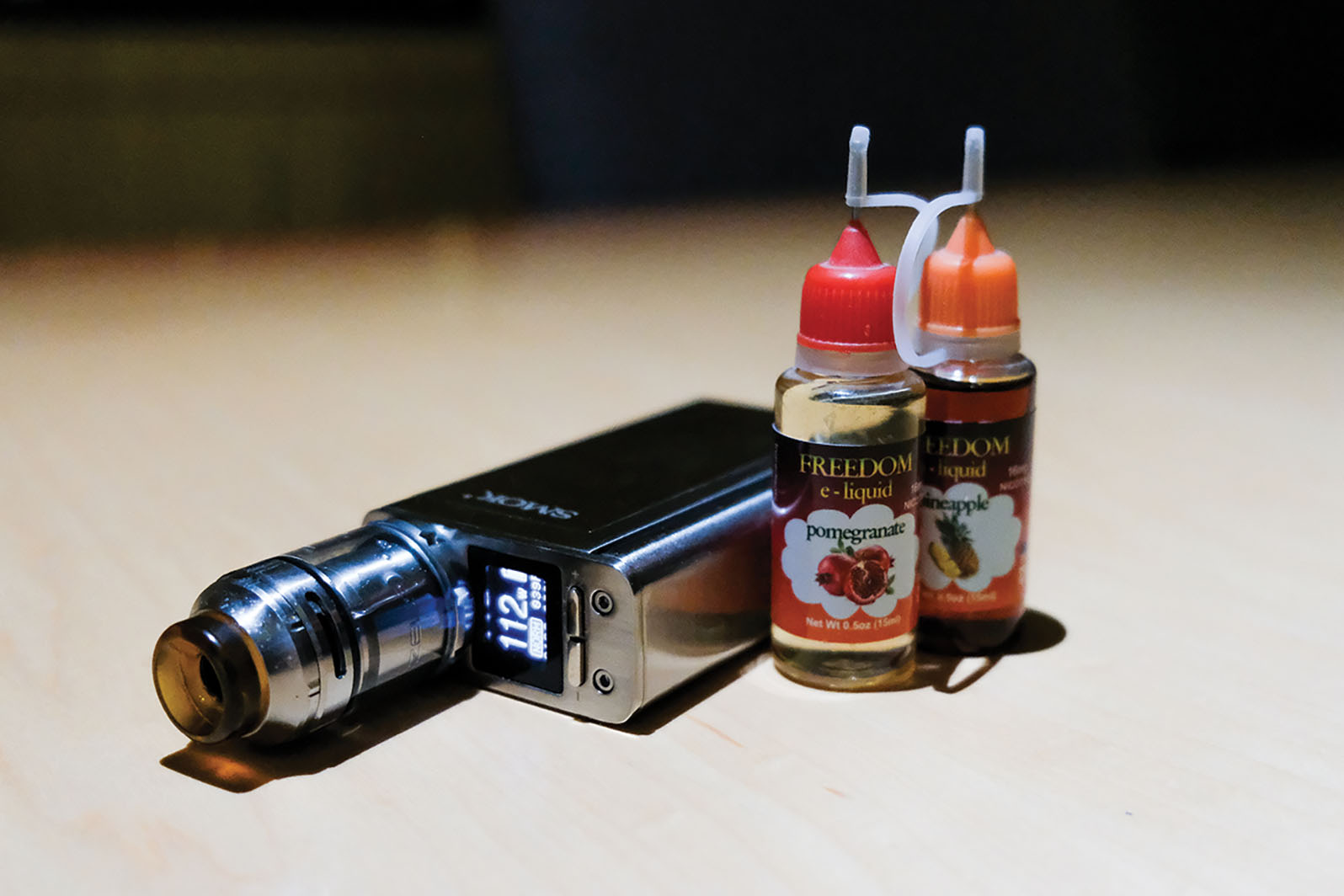Vaping has recently gained popularity within the past couple years. This modern trend has been branded to be healthier than its counterpart —cigarettes, but is it?
Vaping devices are known as several things such as: E-Cigarettes, JUULs and electronic nicotine devices. Vaping has picked up momentum within the last few years, even though smoking has been around since the times of the ancient Egyptians around 400 BC when they would throw cannabis or herbal concoctions onto a hot stone and inhale the vaper. Vaping was first intended to help adult tobacco users cut back, quit smoking or stop chewing tobacco products.
E-cigarettes or JUULs are made up of different components, a battery, a cartridge and a vaporizer, which heats the liquid.
One thing is known, vapers are not hard to find. Many of them are found at your local gas station. Vaping hardware can look as simple as a USB drive and is marketed like cellphones. Companies come out with unique editions of vape pens that come in appealing colors with sleek and cool designs.
The most appealing factor to teens and young adults, when it comes to vaping is the e-liquids — commonly known “Vape Juice.” Vape Juice comes in many different flavors: Lemon Lime, Coffee, Tigers Blood, Cherry, Grape and many other flavors that would appeal to youth.
What does vape juice contain? Most vape juice contains vegetable glycerin, propylene glycol, flavor and nicotine. Even though it does not contain poisons like tar and carbon monoxide, which is both found in cigarettes. Findings show that vaping is a one-way bridge to cigarette usage.
New research showed among teens that have vaped but never tried tobacco, 31 percent went on to try tobacco cigarettes the following year. According to San Juan Basin Public Health Department (SJBPH) and the Healthy Kids Colorado Data (2017) from Region 9, 66 percent of local teens do not use e-cigarettes, JUULs and electronic nicotine devices. However, there are those 34 percent of teens in Southwest Colorado who are using these devices.
“Only 50 percent of youth think it’s risky to use e-cigarettes,” according to a statement published by SJBPH.
Nicotine is highly addictive. When smoked nicotine rapidly enters the bloodstream and reaches the brain within eight to 20 seconds. E-cigarette smoking poses significant, but avoidable, lifelong risks to the health of teenagers and young adults.
Many studies have shown that nicotine can have lasting effects on the adolescent brain. According to the Centers for Disease Control (CDC), young bodies are more sensitive to nicotine and they can become addicted more quickly than adults. Most young smokers already show signs of damage to their hearts and blood vessels. Average teens who smoke tend to die prematurely on average 13 years earlier than their peers.
Some evidence suggests that e-cigarette use is linked with other substance abuse like alcohol and marijuana. Some e-cigarettes can also be used to deliver other drugs like marijuana.
Many are fooled into thinking that vaping may not have a second-hand smoke effect, but is that true? According to a study done by Wolfgang Schober of the Bavarian Health and Food Safety Authority and colleagues published in July of 2014, found that vaping worsened indoor air quality by the amount of nicotine that is in e-cigarettes. Their data also confirmed that since e-cigarettes are not emission-free, their pollutants could be of health concern for secondhand smokers — especially children.
Parents who want to get involved, take action or help reduce the use of vape products can take the first step by getting to know more about e-cigarettes and their counterparts. Also talk to your teens or young adults about the facts of vaping.
According to SJBPH, “Colorado teens who can ask their parents or guardians for help are 31 percent less likely to vape.”
Want to learn more information about vaping, San Juan Basin Public Health is having a Parent Education Night at the Ignacio Community Library, Wednesday, April 24, from 5:30 – 6:30 pm or visit www.tabaccofreeco.org/know-the-facts.

